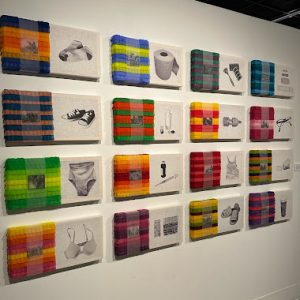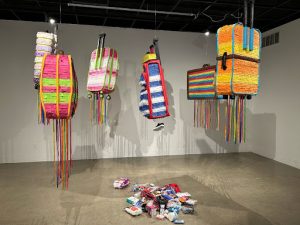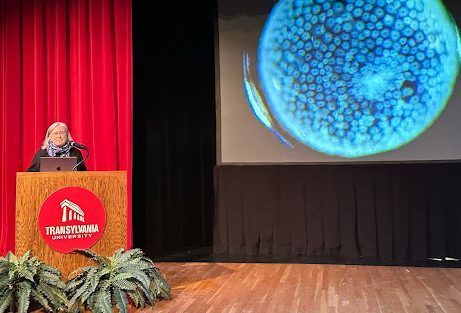Transylvania’s Morlan Gallery recently featured an exhibition titled “Dis/Belief,” from September 12th through October 6th. The main theme of this display was “Skeptical realities and the power of interrogating assumptions.” Artist Geraldine Ondrizek chose to look closely into how science and skepticism collide within her art. The pieces in Morlan Gallery featured photographs on vellum where she displayed anthropologist Georg Geipel’s measurements for hand and fingerprints.
 During an artist talk on October 12th, Ondrizek highlighted that “Geipel’s measurements were able to identify inherited hand line similarities in identical twins based on embryology.” Within her talk, Ondrizek discussed her personal connection to the study of genetics, which is often integrated into her art, due to her mother and daughter dying of the same genetic anomaly. She brings a maternal light to her work and uses art as a means to ease into the intensity of her topics.
During an artist talk on October 12th, Ondrizek highlighted that “Geipel’s measurements were able to identify inherited hand line similarities in identical twins based on embryology.” Within her talk, Ondrizek discussed her personal connection to the study of genetics, which is often integrated into her art, due to her mother and daughter dying of the same genetic anomaly. She brings a maternal light to her work and uses art as a means to ease into the intensity of her topics.
Ondrizek also discussed how she has been politically active within her work, addressing topics such as the Patriot Act. Ondrizek also uses her creations to explore eugenics, a topic she described herself as always having an interest in due to her family being German and growing up with a Holocaust survivor. Ondrizek’s artwork was later featured in Eugenic Nation, a book by Alexandra Stern. Her piece “Chromosome 17” is shown on the cover of the book; it depicts chromosomes and DNA hand-embroidered on cloth panels.
 She also discussed how her marriage to her Palestinian husband continues to influence her artistic and personal life. She worked with refugees and embroidered the names of one hundred sixty-nine Arabic refugees to raise money for refugee children. One of Ondrizek’s main goals with her work is to avoid putting people in boxes, and for people to further understand the ethics of how we treat people.
She also discussed how her marriage to her Palestinian husband continues to influence her artistic and personal life. She worked with refugees and embroidered the names of one hundred sixty-nine Arabic refugees to raise money for refugee children. One of Ondrizek’s main goals with her work is to avoid putting people in boxes, and for people to further understand the ethics of how we treat people.
Ondrizek has worked with many scientists and case studies to produce her work; she says her motivation is to show people how genetics work. Scientists needed good graphic communication for their studies and Ondrizek has provided beautiful pieces of artwork to support science.



